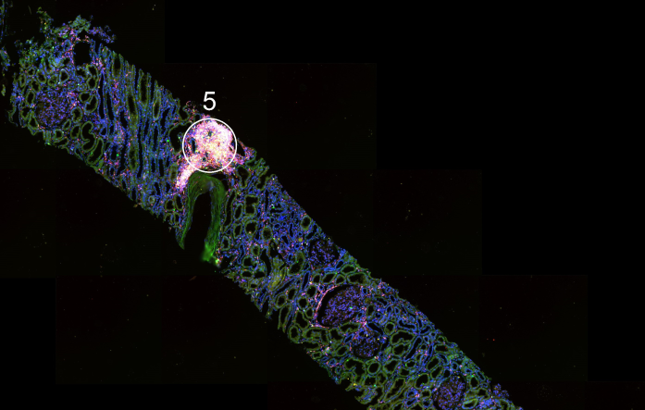Characterisation of Distinct Graft Infiltrates Following Cellular Therapy in Kidney Transplant Recipients
M. O. Brook1, P. N. Harden2, I. Roberts2, W. R. Mulley3, J. Hester1, M. E. Reinders4, F. Issa1
1Nuffield Department of Surgical Sciences, University of Oxford, Oxford, United Kingdom, 2Oxford University Hospitals NHS Foundation Trust, Oxford, United Kingdom, 3Department of Nephrology, Monash Medical Centre, Melbourne, Australia, 4Division of Nephrology and Transplant Center, Leiden University Medical Center, Leiden, Netherlands
Meeting: 2021 American Transplant Congress
Abstract number: 14
Keywords: Biopsy, Graft-infiltrating lymphocytes, Kidney transplantation, Tolerance
Topic: Clinical Science » Biomarkers, Immune Assessment and Clinical Outcomes
Session Information
Session Name: Biomarkers, Immune Assessment and Clinical Outcomes - I
Session Type: Rapid Fire Oral Abstract
Date: Saturday, June 5, 2021
Session Time: 4:30pm-5:30pm
 Presentation Time: 4:45pm-4:50pm
Presentation Time: 4:45pm-4:50pm
Location: Virtual
*Purpose: Cellular therapy is an emerging treatment in the field of clinical transplantation with the potential to improve both short and long-term transplant outcomes. We are taking the first steps towards assessing the potential of cell therapies in the clinical setting of living donor kidney transplantation. A critical aspect of these studies is generating an understanding of how infused cell therapies might impact on the recipient immune response to alloantigen and mediate any beneficial effect.
*Methods: Patients receiving regulatory T cell infusion as part of a phase 1 clinical trial underwent a protocol biopsy at 8 months post-transplant. Biopsies are compared with those from patients with an acute T cell mediated rejection episode and surveillance biopsies from patients with clinically stable graft function. Initial analysis was performed using routine immunohistochemistry. Subsequently, a NanoString GeoMX digital spatial profiler was used to interrogate the composition of biopsy infiltrates through protein and mRNA expression in a tissue location specific manner (Figure 1).
*Results: Routine histology demonstrated the presence of unique cellular infiltrates that were dense and remarkably focal in nature in all patients treated with cell therapy. Immunohistochemistry revealed between 5 and 10% of such infiltrates are positive for FOXP3, a marker of regulatory T cells, but one that is also expressed on activated human effector T cells. Digital spacial profiling revealed that infiltrates in all three clinical scenarios demonstrate unique properties based on protein and mRNA expression data and represent distinct cell populations. Infiltrates in the setting of cellular therapy have an expression profile suggestive of regulatory activity.
*Conclusions: We demonstrate the prescence of dense focal cellular infiltrates in renal transplant biopsies from patients treated with cell therapy. Such infiltrates are interogated using novel spatial profiling techniques and found to be distinct from those seen during a rejection episode and from infiltrates noted on surveillance biopsies.
To cite this abstract in AMA style:
Brook MO, Harden PN, Roberts I, Mulley WR, Hester J, Reinders ME, Issa F. Characterisation of Distinct Graft Infiltrates Following Cellular Therapy in Kidney Transplant Recipients [abstract]. Am J Transplant. 2021; 21 (suppl 3). https://atcmeetingabstracts.com/abstract/characterisation-of-distinct-graft-infiltrates-following-cellular-therapy-in-kidney-transplant-recipients/. Accessed December 26, 2025.« Back to 2021 American Transplant Congress

